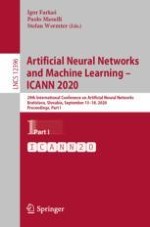2020 | OriginalPaper | Buchkapitel
Physiologically-Inspired Neural Circuits for the Recognition of Dynamic Faces
verfasst von : Michael Stettler, Nick Taubert, Tahereh Azizpour, Ramona Siebert, Silvia Spadacenta, Peter Dicke, Peter Thier, Martin A. Giese
Erschienen in: Artificial Neural Networks and Machine Learning – ICANN 2020
Aktivieren Sie unsere intelligente Suche, um passende Fachinhalte oder Patente zu finden.
Wählen Sie Textabschnitte aus um mit Künstlicher Intelligenz passenden Patente zu finden. powered by
Markieren Sie Textabschnitte, um KI-gestützt weitere passende Inhalte zu finden. powered by
